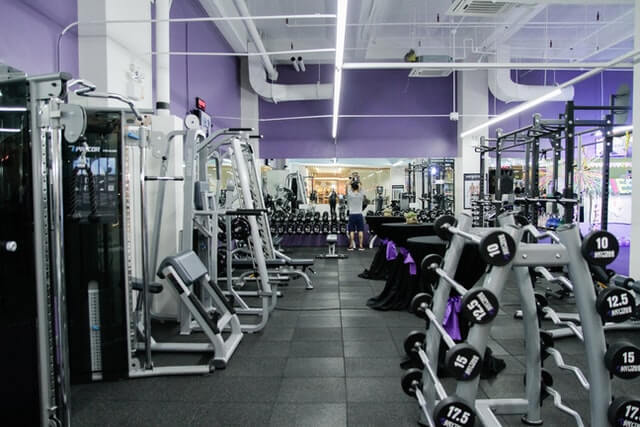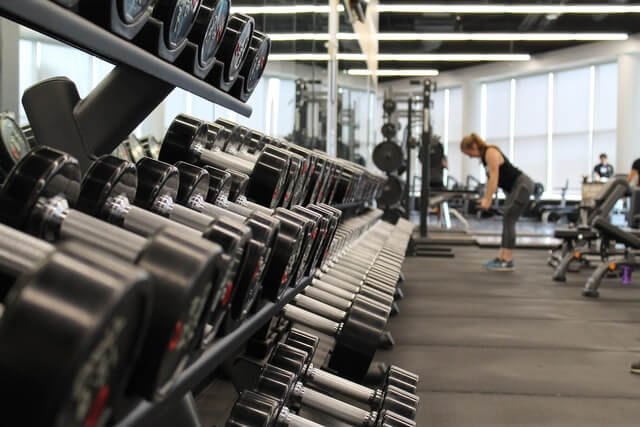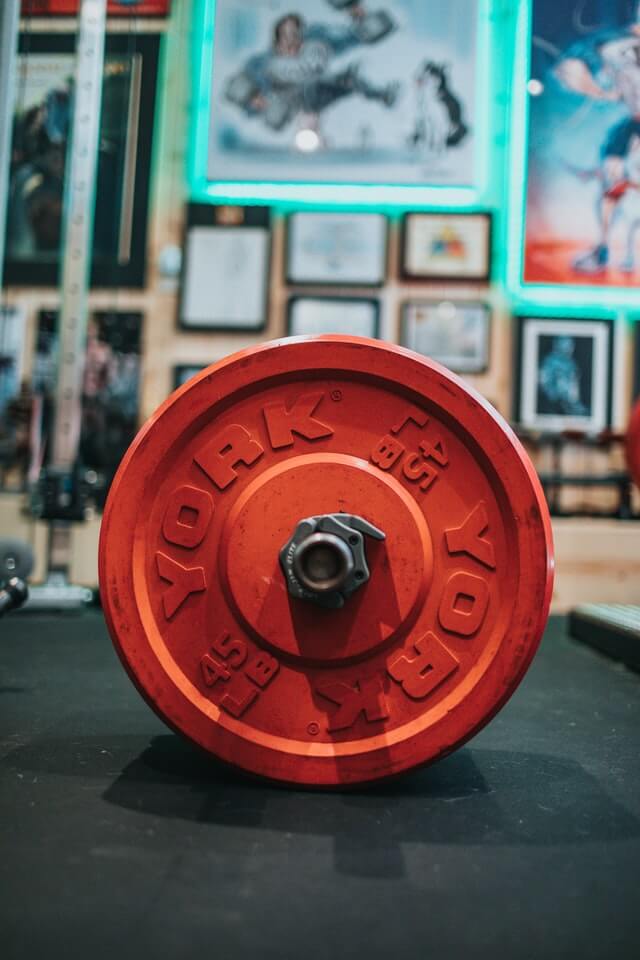I'm sure most people, when entering a gym for the first time, become a little intimidated by the array of equipment in front of them. Dumbbells, barbells, machines for this, machines for that, cables, pulleys - even cages! If you've never lifted weights before, it can be more than a little daunting. Are free weights better than machines? With all the different types of equipment and exercises, how do you know which will give the best results?
More...

Both free weights and resistance machines have their advantages and disadvantages.
Below, we'll look at the pros and cons of each to help you decide which equipment is better.
Resistance training and how it works between machines and barbells
Weight machines employ what's called 'variable' resistance.
In essence, the resistance or weight that you lift changes through the range of motion.
You might have noticed on the resistance machines the pulleys and cables that connect everything together. Many have geometrically-shaped cams integrated with their structure.
In mechanics, this shape effectively changes the length of the lever arm. In practical terms, at weaker joint positions in the movement, the cam gives you a mechanical advantage. Conversely, at points in the movement where your muscles are naturally stronger, the machine makes the weight more difficult to lift.
weight machines allow you to train a muscle, free weights allow you to train movement
Changing how these lever arms and cams work allows weight machines to stress your muscles more where required. That is, at the positions in the movement where they are able to produce more force.
However, human bodies are not identical. We come in all different shapes, sizes and lever lengths of our own. That means that not all machines may be able to match their resistance profile to your strength.
Free weights - barbells, dumbbells and kettlebells
On the other hand, with free weights, the resistance on your muscle remains constant throughout the whole range of motion.
In other words - when you lift a 20kg barbell, it's 20kg at every part of the movement. 20kg at the beginning, the middle and at the end.
Each of our skeletal muscles have a natural, in-built 'strength curve.'
There are points in your joints' range of motion where your muscles are stronger. Conversely, there are points at which they are weaker.
For example, take the bench press. No one fails on the bench at the top of the movement, i.e. the start. Failure comes when you aren't able to press the bar back up from the bottom position, away from your chest. That's the weakest point of the movement.
In essence, it's the weakest point in each of your movements that limits the weight you can lift. In simple terms, free weights can only provide enough stimulus for those weaker joint positions.
Resistance Advantage: Weight Machines
Specificity, isolation and movement specificity of resistance machines vs free weights
For the most part, weight machines only allow single-joint exercises. Furthermore, the movements often occur in just one single plane of motion.
Put another way, resistance machines literally guide your motion. As a result, they tend to isolate the effects to recruit muscles just to those specifically targetted by that particular machine.
This lack of movement freedom does have benefits. You can really target and isolate specific muscles and body parts. This is invaluable if you're looking to hone in on a specific muscle group.
However, with free weights our movements occur in 3 dimensions - throughout all planes of motion. As a result, our body has to recruit more muscles to perform each movement.

That being said, this inherent 'instability' of free weight training may bring some consequences. You need to know what you are doing and in many cases, you'll need a spotter.
Free weights allow you to efficiently perform multi-joint, compound exercises.
Therefore, you can closely mimic those activities in everyday life or specific sporting movements and actions.
This is where free weight training really comes into its own.
In terms of acquiring specific skills, multi-joint movements also help improve your brain-body connection or neural drive.
It must be said that multi-joint, compound free weights exercises do require a higher level of skill. You may need to take some time learning, practising and acquiring specific movements. However, this slight disadvantage brings massive advantages in terms of training benefits and gains in movement specificity.
Movement specificity advantage: Free Weights
Strength gains when training weight machines as opposed to free weights
Firstly, to measure strength we effectively have to measure how much weight we can lift. Therefore, how we determine that measurement is important. If we measure strength based on how much weight is lifted on the machine chest press, then someone who has trained solely on that piece of equipment may score highly.
In contrast, if we measure strength based on deadlift ability, then someone who's trained with free weights for years is likely to score much higher than someone who only uses machines.
Studies have found that when one rep max (a measure of strength) is tested using an exercise different from any used during training, strength gains have been similar between resistance machines and free weights.
However, when strength is tested with the same equipment used for training, there tends to be a greater carryover of strength obtained using free weights as opposed to machines.
Overall, training with free weights gives bigger strength gains compared to machines.
Strength advantage: Free Weights
Workout flexibility and customisation
In general, weights machines don't provide much in the way of flexibility when it comes to designing workouts. Equipment manufacturers do aim to accommodate as many body types as possible. However, there is a limit on how many adjustments you can make when setting up a machine.
Additionally, progression can be problematic when training with machines. For example, the weight stack may increase in 5 or 10kg increments only. That can be quite a big jump for certain muscle groups and movements. Particularly when we are near our maximum capability.

In contrast, you can progress free weights exercises in much smaller increments. For example, using micro change plates, the weight on a barbell can be adjusted by as little as 0.5kg.
Furthermore, as mentioned earlier, free weights don't restrict the position you perform the exercise. Instead, free weights allow you to make adjustments based on your specific biomechanics and body type.
Unlike with weights machines, a couple of dumbbells may allow you to perform a practically infinite number of exercises.
Also, with free weights, you have a greater opportunity to engage many more large muscle groups. In effect, your body works harder meaning potentially bigger effects on your fitness and body composition.
Customisation advantage: Free Weights
Injury risks associated with weight training
Firstly, let's be clear. Injuries can happen in the gym regardless of what equipment or training style you use.
That being said, injuries are less likely when using weights machines. As mentioned previously, the machines' fixed movement patterns guide you through each exercise, providing greater stability.
Free weights' inherent freedom of movement poses a greater risk of injury occurring. All the more reason why it's important you know what you're doing beforehand.
However, if you take your time learning the moves and focus on performing exercises correctly, you'll greatly reduce your risk of personal injury.
Slight injury advantage: Weight Machines
READ ALSO: 10 Interesting Facts About Shoulder Pain
The overall winner of best resistance training method: Free Weights
Despite their fixed resistance at all joint angles and a slightly higher risk of injury, free weights still have an overall strength training advantage.
You can be much more specific in your training with them, more flexible in your programming and they offer a bigger stimulus for your muscles to get stronger.
Above all else, remember this - weight machines allow you to train a muscle, free weights allow you to train movement.
And that is something most of, if not all of us, needs!
Summary: Should I Use Weight Machines or Free Weights?
So, putting it all together, here's a quick summary to help you decide what's best for you.
Remember, there isn't a single best approach that suits everybody. That's why it's super important our training routines are customised to our own bodies and goals.

